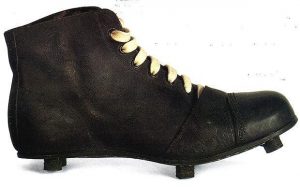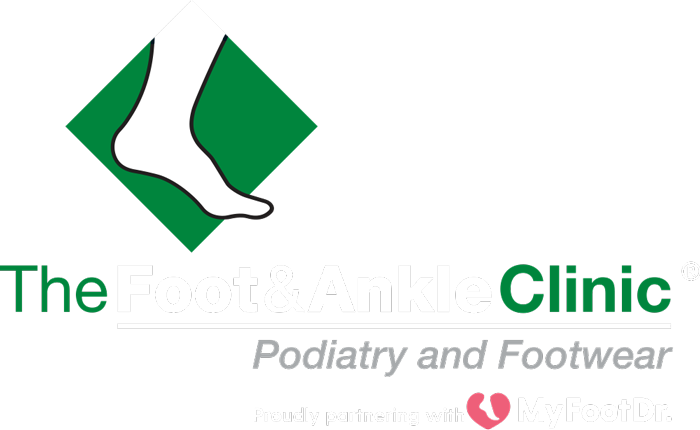Football boots: what is the key?
The evolution of football boots and playing surfaces have seen dramatic changes in the last several years. My expertise lies in over 10 years of football boot fitting experience, with the last 4 years at SPT Football. As well as on the field with 25 years of football experience from the old Vic kick days through to time in the QAFL and several seasons playing and coaching soccer, here are the key points for selecting the most appropriate football boots.
Get your boots fitted properly
Many adults and children pick their boots on how they look, which professionals wear them and what their friends think of how they look. The main issue with this is that, at the professional level, many of the players have individual moulds of their feet and have their boots individually made. Elite playing surfaces are often reseeded 2 or 3 times a season with different grasses to insure optimal growth in climatic conditions (summer vs winter). Some council operated grounds are seeded less than once a season, increasing the likelihood of studs ‘trapping’ (which is boots simply getting trapped in the ground).
 In a study comparing 2 professional teams, one team had self-selected boots and the other had their boots selected based off their foot profiles. The team that had professionally fitted boots had higher comfort ratings and a lower incidence of lower limb injuries.
In a study comparing 2 professional teams, one team had self-selected boots and the other had their boots selected based off their foot profiles. The team that had professionally fitted boots had higher comfort ratings and a lower incidence of lower limb injuries.
The best shoe is the shoe that fits best!
Pick the right type of studs

With the plethora of sole plates available now for an expanding amount of playing surfaces, picking the right traction for the right surface is more important than ever. Variations of sole plates are most commonly broken down into the following: Firm Ground (FG), Soft Ground (SG), Turf (TF), Artificial Ground (AG) and Mixed ground (MG, or FG/AG depending on brand). Playing surfaces have had dramatic changes in recent times. To reduce upkeep and reduce games being cancelled due to weather, we have seen an increase in artificial playing surfaces in soccer, meaning there is now primarily 2 types of surfaces, natural grass and artificial grass. Below is a simple table to summarise the best way to select stud configuration.

Performance and uppers
A shoe that is fitted correctly and is the most comfortable is going to perform the best. Therefore, each boot is going to perform differently for each person. There are some minor differences in stud shapes and upper features that can help with acceleration/deceleration and ball touch that should be taken into consideration after the fit of the boot.
As indicated by the table above, a study that included pressure sensors in boots found very little tractional variations between boots in shuttle run conditions. But as this was a once off event, it did not consider the durability of different boots on different surfaces. From retail experience many leather or FG boots will wear out a lot quicker on artificial grounds.

The upper materials of football boots have moved a long way from traditional leather constructs, to becoming second skins and sock like comfort. Long gone are the days of a synthetic boot being a lower quality boot. Synthetic materials are now able to be made to be as good, if not better, than their leather counterparts. No upper will help you kick a goal from 50 after the siren, or whip in a pinpoint cross. There is a touch and feel difference of each. Whether the difference is better or worse is purely a personal preference that will take trial and error to find.
Care of your boots

Because boot construction is now much lighter and more comfortable than years gone by, care is needed to ensure longevity. The smell from football boots is an indication of poor maintenance. Smells within any shoe is often from bacteria or fungi that at thriving in the warm and moist environment within shoes. To reduce athlete’s foot (tinea) and fungal nails, make sure you are drying your boots from the inside with alcohol sprays and paper towels. Alternating boots from each session has also shown to reduce fungal infections, increase longevity and has also been shown to increase intrinsic foot muscle strength with the foot requiring to function differently in each boot for postural support.
Biomechanics and boots
Due to the nature of football codes being highly repetitive and high load with high traction forces, research has shown that across the codes there is a 2-fold increased risk of injury. Some of the more common conditions we see within football populations are: Calcaneal Apophysitis (Sever’s disease), Plantar Heel Pain (Plantar Fasciitis), Soft Tissue Injuries and Ankle Pain. Ensuring a correct fit of your boots can help with treatment modalities. The Foot and Ankle Clinic have many treatments to help, including Shockwave therapy, Dry Needling, Strapping, Prolotherapy and Orthotic Therapy.
At the Foot and Ankle Clinic our highly qualified team of Podiatrists are all members of the Australian Podiatry Association and offer a combined 50 years’ experience. They are trained to diagnose and effectively treat sports-related conditions and injuries via a range of treatments.
Put your feet in our hands! See us today at Chadstone, East Bentleigh, Moe, Sale, Traralgon, Warragul & Online Store and Retail Enquiries. NO REFERRAL NEEDED!.

 By
By 